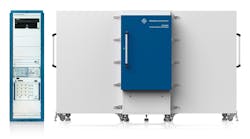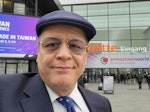Multi-AoA System Performs CTIA OTA Certification Test
What you’ll learn:
- 5G NR mmWave technology challenges.
- How the 5G spectrum is split.
- The importance of multi-AoA test.
The mmWave 5G market is predicted to grow to US$4.9 billion by 2027, according to a new report by MarketsandMarkets, driven by industry migration and adoption. The 5G NR mmWave infrastructure leverages advanced technologies such as beamforming using sophisticated antenna array systems, challenging designers to develop solutions that can operate in a crowded multispectral RF space.
The 5G operating spectrum is currently split into two different frequency ranges, frequency range 1 and 2 (FR1 and FR2). FR1 is expected to carry the lion's share of traditional cellular communications, while the higher frequency of the FR2 range targets short-range high-bandwidth applications. For FR2, every device must be tested over the air (OTA) to verify data rates and latencies. Certification by CTIA is important for validating 5G devices, especially at FR2 frequencies.
To address the validation requirements of these advanced 5G NR solutions, Rohde & Schwarz released a test solution authorized by the CTIA for 5G FR2 certification that also offers full multiple angles of arrival (multi-AoA) capabilities, verifying the performance of mobile devices in the millimeter-wave (mmWave) space. The solution uses the R&S TS8980 conformance test system and the R&S CMX500 5G tester, along with the R&S ATS1800M mmWave (FR2) chamber.
Scalable from 30- to 40-cm quiet zone, from single AoA to multi-AoA and from in-band to out-of-band, the test system can address advanced testing challenges such as phantom testing with two-hand landscape, as well as single-hand portrait and head testing. Providing support for the upcoming test requirements from 3GPP release 16, 17 and 18, the solution gives customers the opportunity to fully automate the RF and RRM certification testing process on a single test system. It covers OTA performance tests from CTIA as well as tests defined by 3GPP and GCF.

